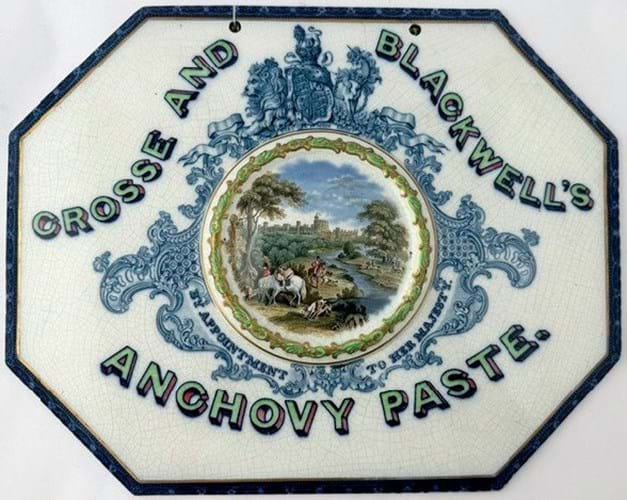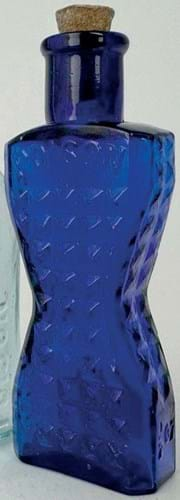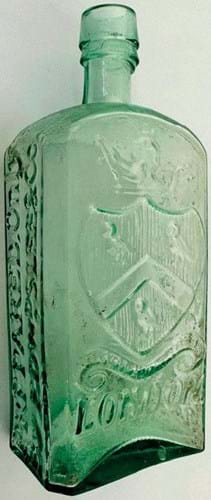
A number of these can bring four-figure sums but what must be a record £8000 was set at South Yorkshire bottle and advertising specialist BBR Auctions (15% buyer’s premium) in Elsecar on October 7.
The subject of fevered bidding was a 14in (35cm) wide octagonal plaque by F&R Pratt of Fenton advertising Crosse and Blackwell’s anchovy paste. It is centred by a moulded medallion featuring the print Windsor Park, Returning from Stag Hunting, an image better known as a pot lid.
This is thought to be one of only a couple known, with the other (with a large chip and a hair crack) sold by Reading specialist Historical & Collectable in May for £1100.
The BBR example, with some crazing but no damage, drew 28 bidders and was finally won by a determined phone bidder.
Bottle bidder battles
The upper echelons of the ‘bottle’ market continue to experience a purple patch and BBR proprietor Alan Blakeman knows it.
“BBR sales continue to attract new bidders to the database we have built over 44 years. While we continue to endure long-time collectors passing, the numbers involved continue to climb. We should all gain reassurance from this stability.”
In the wake of the equivalent sale in July when a so-called ‘binoculars’ poison in aqua glass c.1905 sold for £11,000, there were more killer prices for patent poisons from the collection of longtime enthusiast Roy Sherwin.
In an era when it was often necessary to reach for medicine by candlelight, the idea was to patent a bottle that was as distinctive as possible.
Two different bottles of the so-called ‘wasp waist’ type are known. William Stephenson of Dalston patented the basic design in 1894 - the form ‘contracted in the middle, along the narrow sides to enable them to be readily distinguished by sight or touch’. A later design with hobnail points to the surface (1905) was made by the Eclipse glassworks in Lower Clapton from c.1905.
All sizes and variants are super-rare but the only recorded half-ounce variants of the Eclipse (both with the registration mark 460944 and the capacity 1/2oz in the mould) were two bottles dug from the famous Victorian tip at Cow Paddle, Lincolnshire.
One of them was offered here from the Sherwin collection and it was in pristine condition rating a full 10/10. Some 33 people chased it to £22,000, a record for a British poison bottle.
A spectacular recent find in a Kent field was a patent medicine bottle for Dr Joshua Webster’s herbal pick-me-up Cerevisia Anglicana.
It was first available in the 18th century (the Wellcome collection has an early advertisement from 1742) but these rare bottles, crudely embossed with a coat of arms and the name of the distributor Slee and Co of Borough High Street, date from c.1850.
A contemporary newspaper advert describes Dr Webster’s ‘English Diet Drink’ as a Cure for Asthma, Incipient Consumption, Nervous Debility, Scrofula and a sure Purifier of the Blood and specifically counteracting the deleterious effects of Mineral, Mercurial and Metallic Poisons. It was sold by Edward Slee in bottles of three sizes for 14s, 7s 6d and 4s.
These bottles are considerably rarer than the better-known Daffy’s Elixir patents.
A similar example had made £5200 at BBR in July 2020, with this new discovery bought by a room bidder at £5700.
















